Abstract
Twenty four hour intragastric acidity was measured by continuous recording using intragastric combined glass electrodes in 46 duodenal ulcer patients within 48 hours of endoscopic confirmation of active ulceration. Acidity during predefined time periods was compared with that measured in 40 healthy controls without gastrointestinal disease: it was significantly higher in duodenal ulcer patients at all times, but 25% of ulcer patients had median 24 hour acidity within the interquartile range of the normal group. During the evening (18,00 to 22,00 h) ulcer patients had considerable acidity with a median of 39.8 (63.1-31.6) mmol/l (interquartile range) compared with 5.6 (22.3-0.4) mmol/l of controls. It is suggested that antisecretory treatment be directed to decrease this period of unbuffered acidity, as well as during the night, which is presently considered of prime importance.
Full text
PDF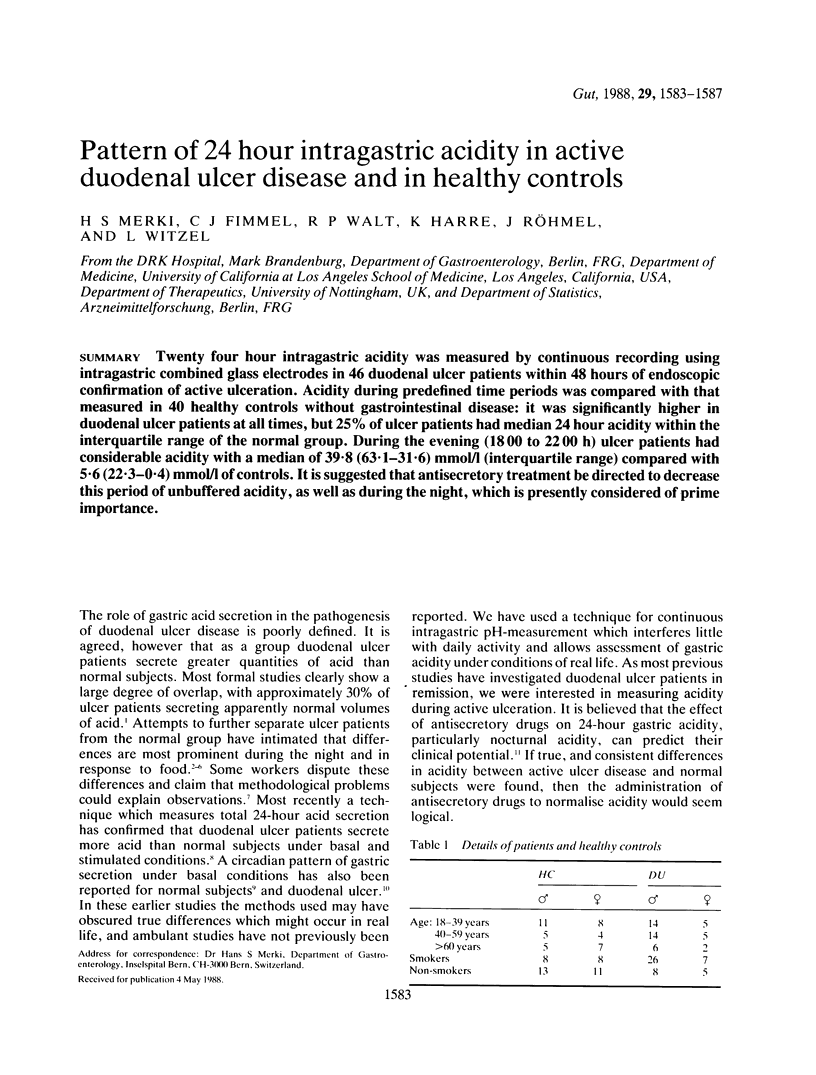
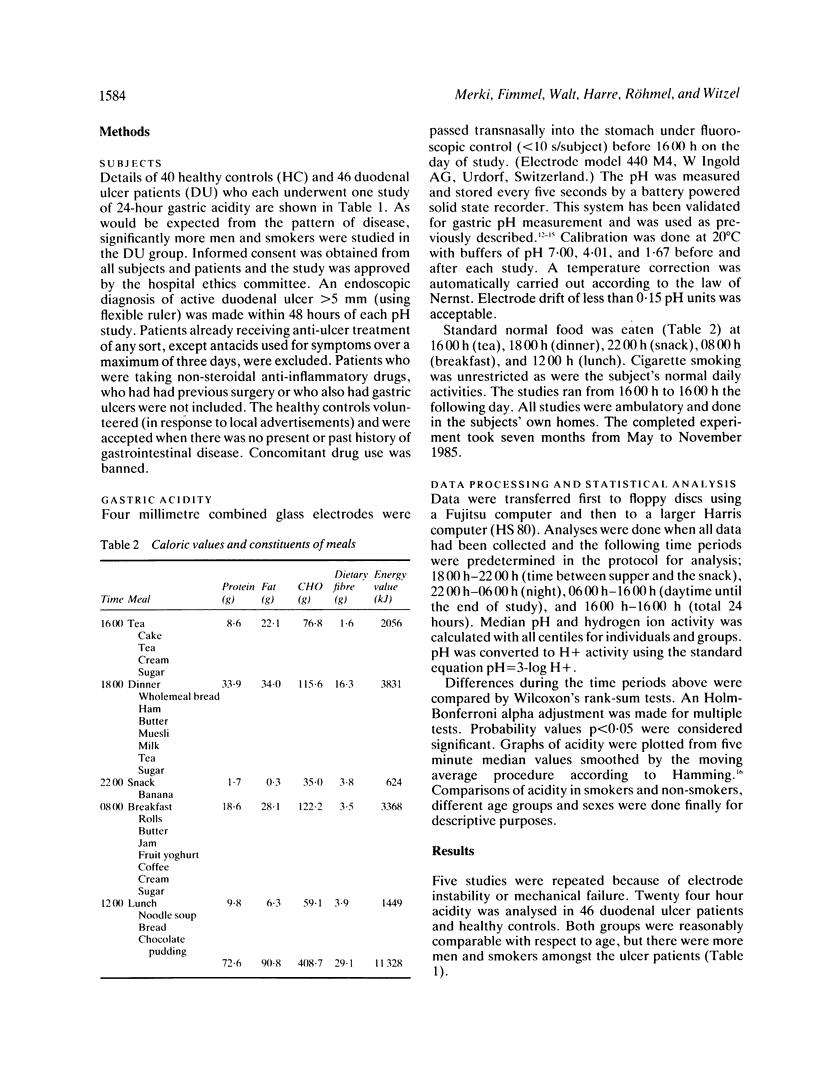
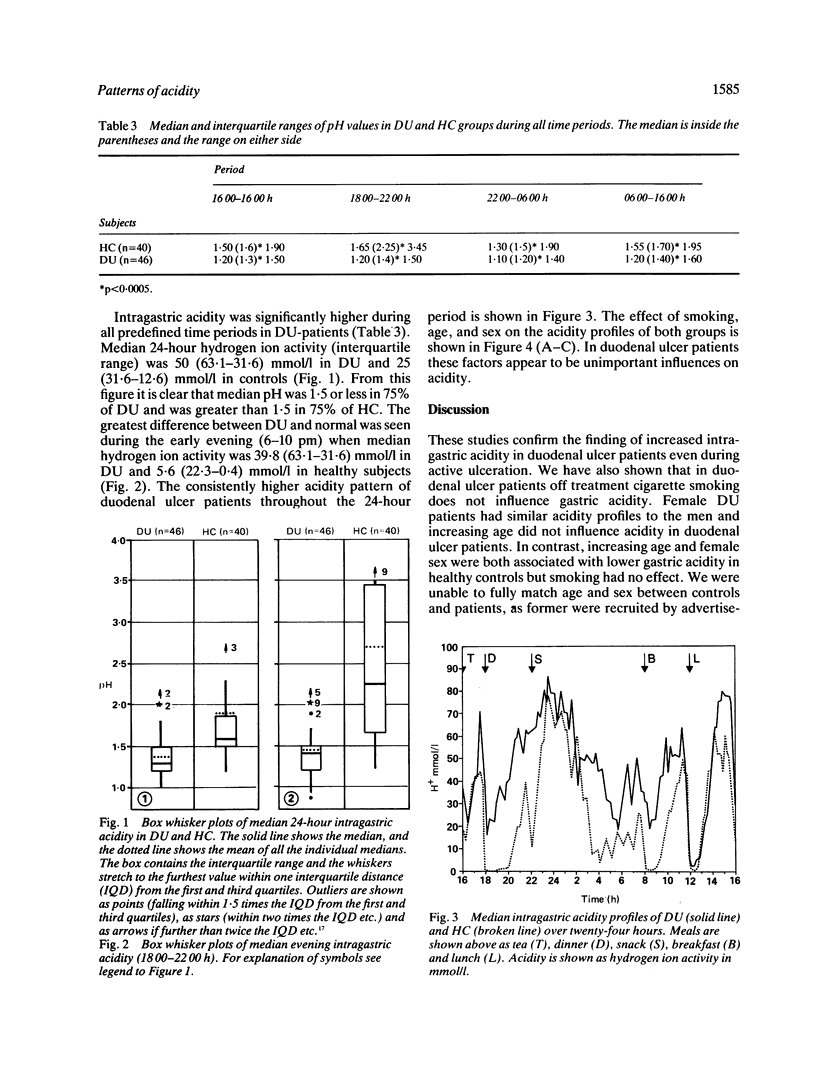
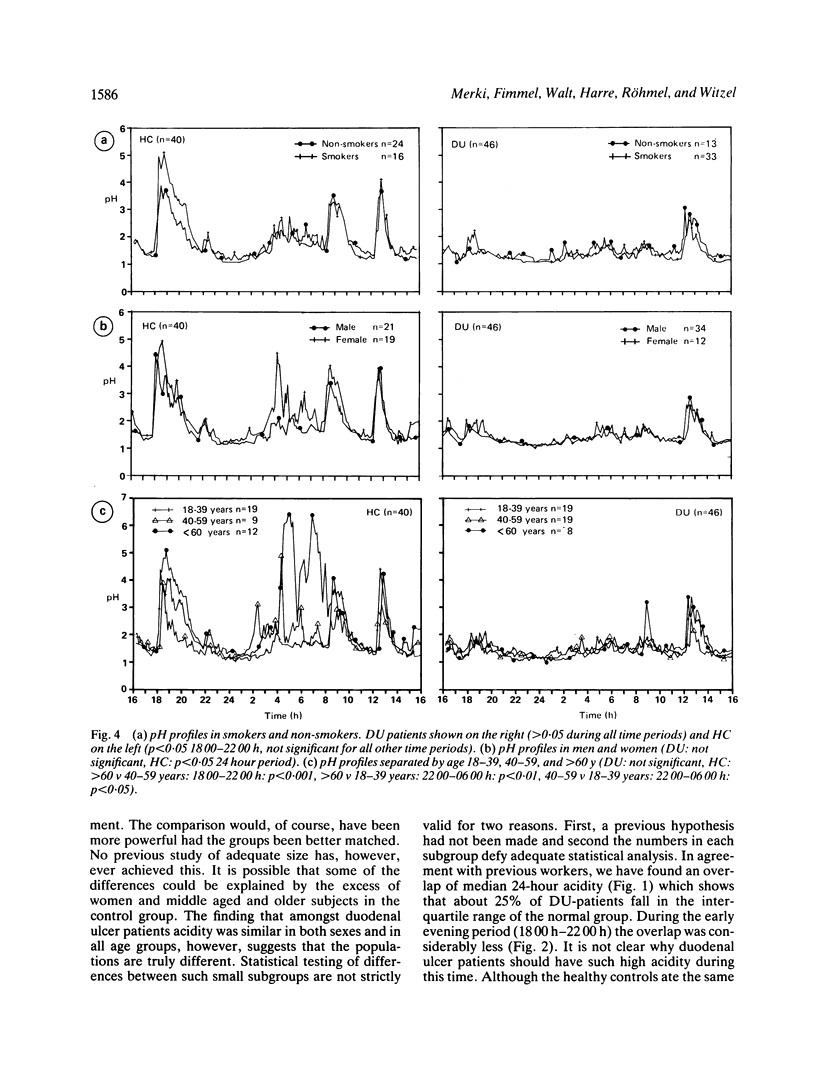
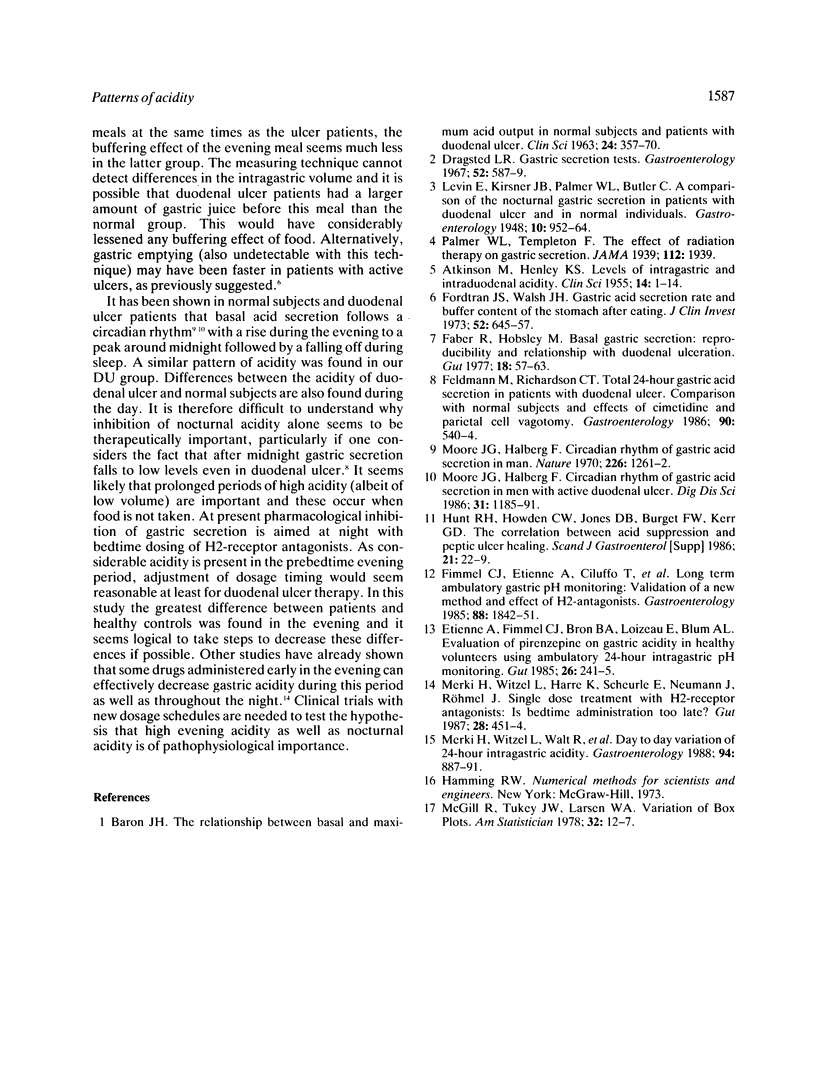
Selected References
These references are in PubMed. This may not be the complete list of references from this article.
- ATKINSON M., HENLEY K. S. Levels of intragastric and intraduodenal acidity. Clin Sci. 1955 Feb;14(1):1–14. [PubMed] [Google Scholar]
- BARON J. H. The relationship between basal and maximum acid output in normal subjects and patients with duodenal ulcer. Clin Sci. 1963 Jun;24:357–370. [PubMed] [Google Scholar]
- Dragstedt L. R. Gastric secretion tests. Gastroenterology. 1967 Mar;52(3):587–589. [PubMed] [Google Scholar]
- Etienne A., Fimmel C. J., Bron B. A., Loizeau E., Blum A. L. Evaluation of pirenzepine on gastric acidity in healthy volunteers using ambulatory 24 hour intragastric pH-monitoring. Gut. 1985 Mar;26(3):241–245. doi: 10.1136/gut.26.3.241. [DOI] [PMC free article] [PubMed] [Google Scholar]
- Faber R. G., Hobsley M. Basal gastric secretion: reproducibility and relationship with duodenal ulceration. Gut. 1977 Jan;18(1):57–63. doi: 10.1136/gut.18.1.57. [DOI] [PMC free article] [PubMed] [Google Scholar]
- Feldman M., Richardson C. T. Total 24-hour gastric acid secretion in patients with duodenal ulcer. Comparison with normal subjects and effects of cimetidine and parietal cell vagotomy. Gastroenterology. 1986 Mar;90(3):540–544. doi: 10.1016/0016-5085(86)91106-6. [DOI] [PubMed] [Google Scholar]
- Fimmel C. J., Etienne A., Cilluffo T., von Ritter C., Gasser T., Rey J. P., Caradonna-Moscatelli P., Sabbatini F., Pace F., Bühler H. W. Long-term ambulatory gastric pH monitoring: validation of a new method and effect of H2-antagonists. Gastroenterology. 1985 Jun;88(6):1842–1851. doi: 10.1016/0016-5085(85)90009-5. [DOI] [PubMed] [Google Scholar]
- Fordtran J. S., Walsh J. H. Gastric acid secretion rate and buffer content of the stomach after eating. Results in normal subjects and in patients with duodenal ulcer. J Clin Invest. 1973 Mar;52(3):645–657. doi: 10.1172/JCI107226. [DOI] [PMC free article] [PubMed] [Google Scholar]
- Merki H. S., Witzel L., Walt R. P., Cohnen E., Harre K., Heim J., Mappes A., Röhmel J. Day-to-day variation of 24-hour intragastric acidity. Gastroenterology. 1988 Apr;94(4):887–891. doi: 10.1016/0016-5085(88)90543-4. [DOI] [PubMed] [Google Scholar]
- Merki H., Witzel L., Harre K., Scheurle E., Neumann J., Röhmel J. Single dose treatment with H2 receptor antagonists: is bedtime administration too late? Gut. 1987 Apr;28(4):451–454. doi: 10.1136/gut.28.4.451. [DOI] [PMC free article] [PubMed] [Google Scholar]
- Moore J. G., Englert E., Jr Circadian rhythm of gastric acid secretion in man. Nature. 1970 Jun 27;226(5252):1261–1262. doi: 10.1038/2261261a0. [DOI] [PubMed] [Google Scholar]
- Moore J. G., Halberg F. Circadian rhythm of gastric acid secretion in men with active duodenal ulcer. Dig Dis Sci. 1986 Nov;31(11):1185–1191. doi: 10.1007/BF01296516. [DOI] [PubMed] [Google Scholar]


